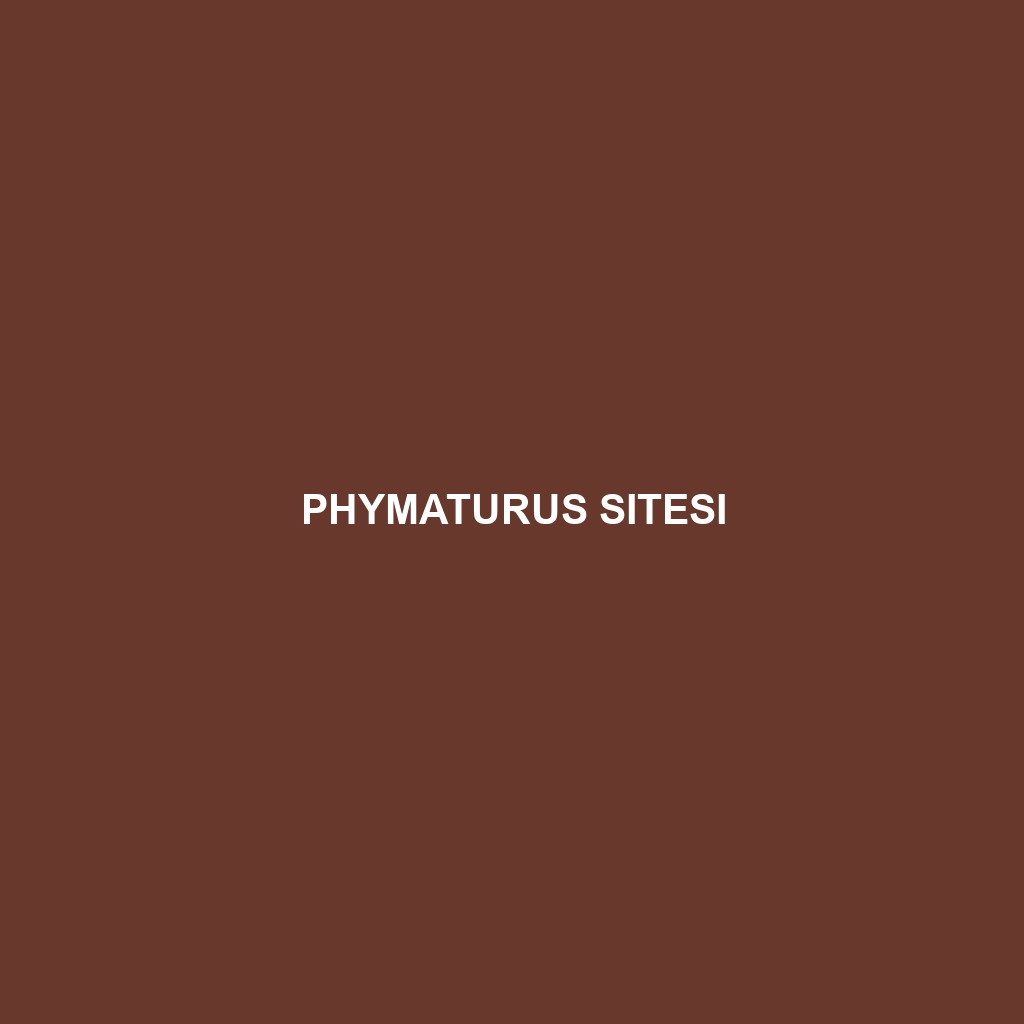Common Name
Phymaturus sitesi
Scientific Name
Phymaturus sitesi
Habitat
Phymaturus sitesi is primarily found in the arid and semi-arid regions of southern Argentina, particularly in the provinces of Neuquén and Mendoza. This lizard prefers habitats such as rocky outcrops and the sparse shrubland typical of the Patagonian steppe. The region experiences a temperate climate with distinct seasonal variations, including hot summers and cold winters. Phymaturus sitesi is often spotted among the vegetation and boulders, utilizing crevices for shelter. These ecosystems play a vital role in maintaining the biodiversity of the area, supporting a variety of flora and fauna.
Physical Characteristics
Phymaturus sitesi is a moderately-sized lizard, typically reaching lengths of up to 20 centimeters (approximately 8 inches). Its body is robust and flattened, with a distinctive coloration that varies geographically. Males generally exhibit vibrant hues with patterns of bright orange or yellow against a darker background, while females tend to have more subdued colors for better camouflage. The species is characterized by its unique, rough scales and a relatively long tail that aids in balance. A prominent feature is its flattened head, which allows for burrowing and maneuverability among rocks.
Behavior
Phymaturus sitesi exhibits primarily diurnal behavior, being most active during the day. These lizards are territorial, with males engaging in displays of dominance such as head-bobbing and color changes to ward off rivals. Their social interactions can also include elaborate courtship rituals, where males perform visual displays to attract females during the mating season. Although not migratory, they have established home ranges and exhibit a tendency to thermoregulate by basking in the sun during cooler parts of the day, making the study of their habitat preferences particularly fascinating.
Diet
Phymaturus sitesi are primarily insectivores, feeding on a diet that includes a variety of insects such as crickets, beetles, and worms. Occasionally, they may also consume plant matter, making them partially herbivorous. Their feeding habits are adapted to the availability of food resources in their environment, and they utilize their keen eyesight to spot prey among the rocks and vegetation. This omnivorous aspect of their diet allows them to thrive even in the harsher conditions of their habitat.
Reproduction
The reproductive cycle of Phymaturus sitesi typically occurs during the warmer months, with mating seasons peaking in the spring. After a gestation period of approximately 60 to 90 days, females lay clutches of 5-10 eggs in hidden nests among the vegetation or under rocks. The hatchlings emerge a few months later, fully formed and miniature replicas of adults. Parental care is limited, with the young lizards becoming independent shortly after hatching. Mating rituals include intricate displays, which add another layer of complexity to their reproductive behaviors.
Conservation Status
Phymaturus sitesi is currently classified as vulnerable due to habitat loss caused by agricultural expansion and urban development. Although not critically endangered, ongoing threats could impact their populations. Conservation efforts are focused on habitat protection and increasing awareness of the species’ ecological importance. Conservationists advocate for sustainable land-use practices to mitigate the effects of habitat degradation and to ensure the survival of this unique lizard species.
Interesting Facts
One remarkable fact about Phymaturus sitesi is its ability to adapt to varying climatic conditions within its range. The lizard has developed unique behavioral and physiological adaptations that allow it to thrive in the extreme temperatures of the Patagonian steppe. Moreover, the striking coloration of males during the breeding season not only serves a functional purpose in attracting females but also plays a role in their social hierarchy.
Role in Ecosystem
Phymaturus sitesi plays a significant role in its ecosystem as both a predator and prey. By feeding on insects, it helps regulate insect populations, contributing to the overall balance of its habitat. Additionally, as prey for larger birds and mammals, the lizard is an integral part of the food web. Its activities in burrowing and foraging also contribute to soil aeration and nutrient cycling, enhancing the ecological health of its surroundings. This lizard species, therefore, is not just a solitary inhabitant; it is a vital component of its ecosystem, supporting biodiversity and ecological stability.
